What is perlite for plants and what is it for?
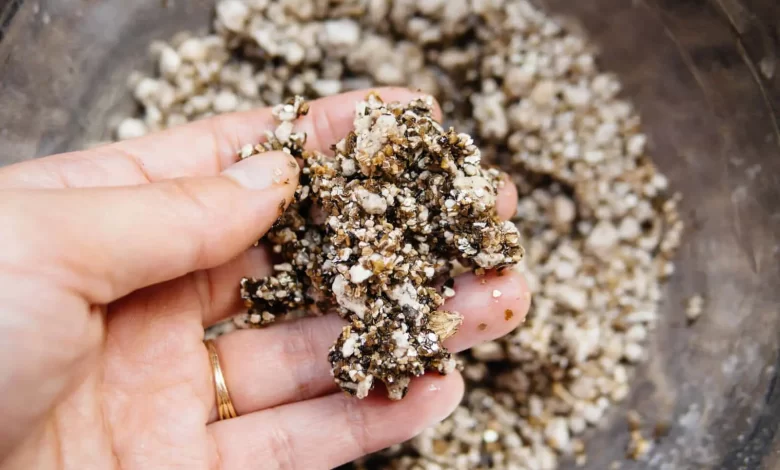
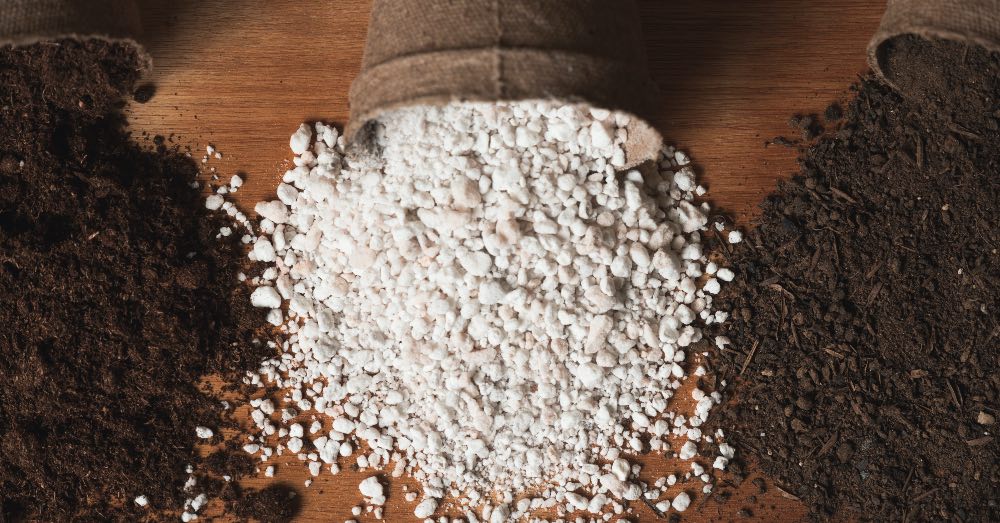
We constantly hear about it and how necessary it is in gardening, but we often do not know what perlite is. And what is more important: what are the benefits of it for our plants. Although we do not know it, it is a fundamental ally when we ask ourselves which soil is best for plants. It is probably at that moment when we discover that apart from the substrate, its presence in the soil mixture is key to its well-being. That is why there is nothing like knowing in depth what it is about and, above all, how to use it correctly.
When we talk about perlite, we tend to believe that it is only essential in houseplants and outdoor plants. And yes: it plays a fundamental role, especially with those plant species that do not get along with excess water in their roots. But let’s not forget that, due to its characteristics, it is also one of those types of substrate that we must keep in mind if we have a garden.
So, whatever our case, let’s take a closer look at what perlite is. An essential starting point to understand, in depth, to what extent yes or yes we should have it.
WHAT IS PERLITE FOR PLANTS?
At first glance, we might think that it is a plastic material for two reasons: its shape but, above all, its lightness. However, delving into what perlite is for plants allows us to discover that, in reality, what we have in our hands is a natural mineral classified as volcanic glass. A detail that already generates the first doubt, when we see its characteristic color between white and gray. Although originally the color is between gray and black, when heated to high temperatures it not only multiplies its size exponentially, transforming into expanded perlite. In addition, it is this process when it acquires its characteristic white color.
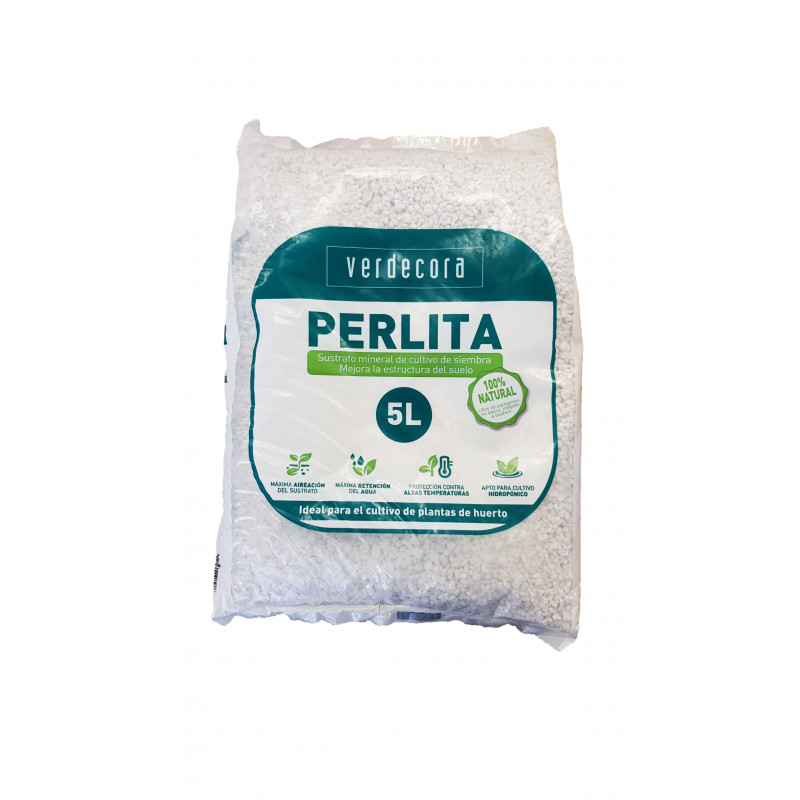
But what is the reason why it is so valuable for the cultivation of our plants? The answer lies inside this natural material made up of a high percentage of silicon. Thanks to that heating process that we mentioned, the perlite not only expands: it also releases the water trapped inside, which ranges between two and five percent. It is thanks to this process that it takes on its singular white colour. And it is curious to know that, in reality, what we see if we observe it closely are white bubbles that keep microscopic compartments of air between them.
Apart from all this, it is convenient to know other details about what perlite is. Not only is it incredibly light, it’s also pH neutral and completely inert. A detail that should be known, since it means that its structure or the ground it is on will not change over time.
WHAT IS PERLITE FOR AND WHAT ARE ITS BENEFITS?
Understanding the natural wonder that is perlite, let’s see in detail how we can take advantage of it when it comes to caring for plants. A great companion to plant substrates but also fulfills certain functions when used alone.
Before more, a piece of advice: to avoid mishaps, it is essential to moisten your hands before handling it. Due to its characteristics, it gives off a slight dust that is not convenient to breathe and that, in addition, can irritate our eyes. A simple precaution that more than pays off! regarding its many virtues.
1. Improves drainage, one of the main functions perlite serves
It is, inevitably, the first point to be discussed when we ask ourselves what perlite is and how to use it. Due to its characteristics, this inert rock favors the rapid elimination of water. Something key for plants that do not tolerate excess irrigation, such as cacti and succulents; but, also, for all the others.
The reason is simple: plant roots need oxygen around them to be able to grow and absorb nutrients from different substrates or fertilizers. When there is an excess of water, the percentage of oxygen that they can access decreases. And what does perlite do in this regard? Trapping air bubbles inside that it progressively releases.
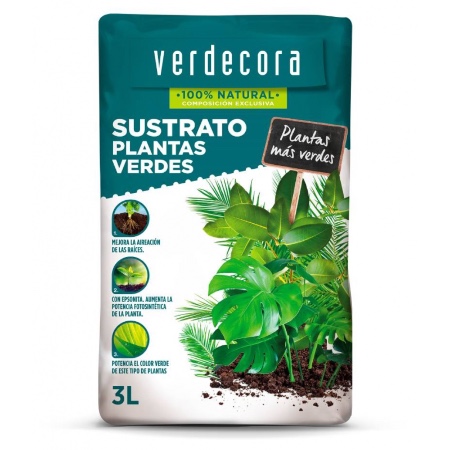
2. Promotes soil aeration
Intimately linked with the above. The presence of perlite in a growing medium substantially improves soil structure. Since it is porous and favors drainage, it helps the soil not to compact. Something that usually occurs in plants with the passage of time and irrigation; but that, in plants grown in pots, is even more common.
In what we see as a caked substrate, there are, in reality, roots suffering from not being able to properly access water and nutrients. A phenomenon that occurs especially in plants that are outdoors in the winter months. Cold, frost and even rain cause soil compaction. Something that we can avoid by incorporating perlite into the substrate that each of our plants needs.
It can also be added to heavy soils to improve consistency and structure.
3. Helps retain moisture in the substrate
One of the most unique aspects and one that is very striking, considering that it favors drainage.
When we saw what perlite is, we talked about the fact that there are small compartments in its structure. Well, it is precisely there where the irrigation water accumulates in minute quantities. A humidity that the perlite retains and that it releases progressively and slowly, as the substrate dehydrates.
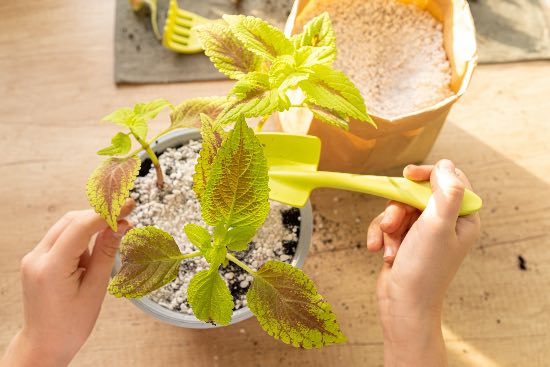
4. Protect from heat, another wonderful use of perlite
In this case, it will not be part of the substrate. Rather, it will be placed on it, creating a kind of mulching but with a very different purpose. Thanks to its color, the presence of perlite on the surface of our plants acts as a reflective screen.
A simple way to avoid that, in months of high temperatures, the solar incidence dehydrates the substrate and, therefore, the roots.
5. Helps to root cuttings but also young plants
An aspect for which perlite is used, and that we can imagine seeing the previous points. Thanks to all its virtues, it allows the creation of strong and healthy roots.
6. Can be used in hydroponics
There is no doubt: hydroponic cultivation is gaining ground precisely because it does not need the latter to develop.
And what does the little pearl paint here? Due to its composition, it naturally provides silicon: a fundamental chemical element for the development of plants. But, in addition, its morphology favors the absorption of nutrients: as happens with water or air, it traps them in its cavities to release them later.
7. It is attributed the quality of avoiding pests and fungi
It is of all the most controversial point when we ask ourselves what perlite is for. And, although due to its functions it is clear that it helps us to avoid the presence of fungi, it is also attributed with less evidence that it is capable of avoiding insects and pests.
ORCHARD AND PERLITE: WHY, YES OR YES, GO HAND IN HAND?
Although, seeing what the perlite is for, we can draw our own conclusions regarding the garden; There are a couple of aspects that should be landed.
On the one hand, it can be essential if we are looking for how to protect the garden from the summer heat. And not so much for its ability to act as a sunscreen but, above all, for its ability to maintain the humidity of the substrate: one of the main workhorses of the hot months.

But there is another task in which perlite is also postulated as essential. Whether we consider how to start an urban garden in seedbeds or we have to plant our garden plants in this way, it will play a fundamental role. A mixture of perlite, substrate for seedbeds, coconut fiber and earthworm humus will be the ideal soil for our seeds or seedlings to grow strong and healthy. And not only because the perlite favors soil moisture or drainage: it will also help in the absorption of nutrients, which is so necessary in these initial stages of garden plants.
And now that you know what perlite is and what it is for, be clear: you won’t want to give it up to enjoy your plants more and better, whatever they are!




![Photo of Prune the Garden: [Importance, Time, Tools, Considerations and Steps]](https://www.complete-gardening.com/wp-content/uploads/2022/08/prune-the-garden-importance-time-tools-considerations-and-steps-390x220.jpg)